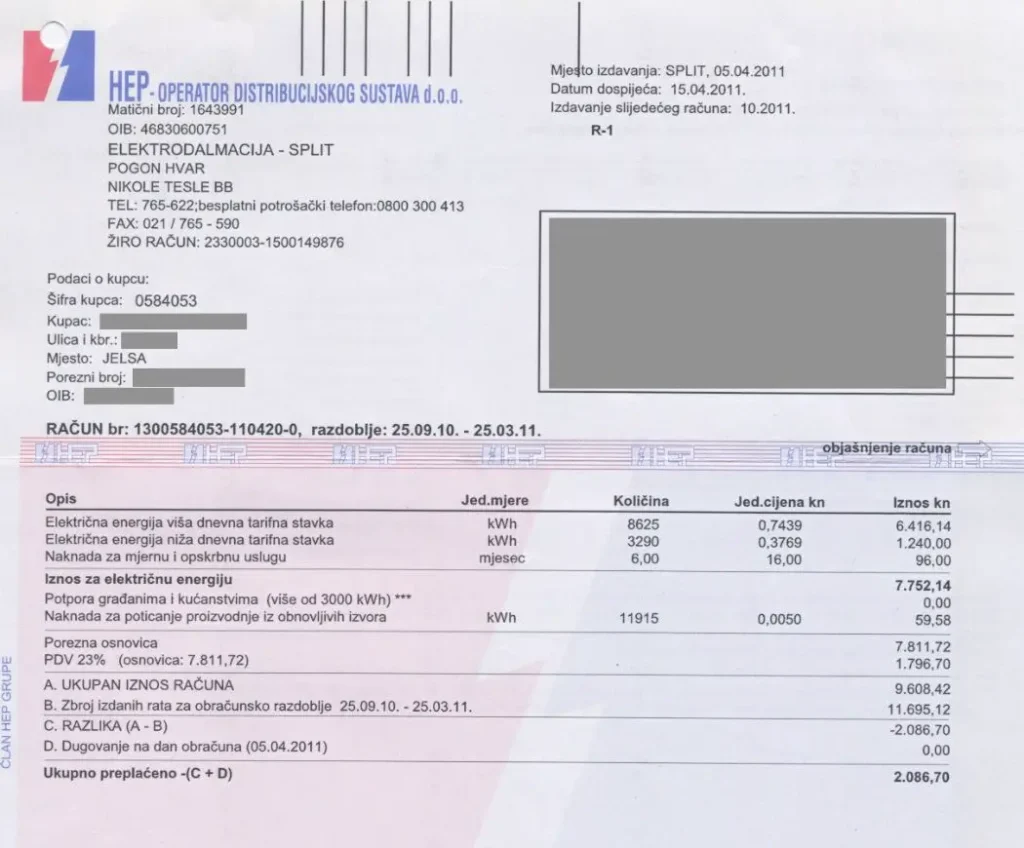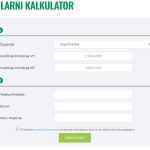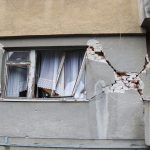It may not be the sexiest topic in the world, but it is one of the more popular items on our sister site, Total Hvar. How to understand and pay one’s electricity bill. Croatian bureaucracy is not famed for its foreign-language friendliness, leaving foreigners with property somewhat in the dark over how to go about simple things such as understanding and paying one’s electricity bill.
Grateful thanks as ever to unpaid pedantic editor-in-chief Vivian Grisogono for this excellent summary of all your need to know about your electricity bill, taken from our Total Hvar site, hence the occasional Hvar reference.
Electricity is something we take for granted, and there is ever-increasing demand for it to power heating, cooling, domestic appliances and industrial machines, to name a few. Electricity suppliers have to work out how to meet the demand, and try not to cost the earth. Croatia has to import much of its energy requirements, and has set in place policies for developing sustainable energy from renewable sources. The good news on Hvar is the plan to introduce photovoltaic modules to produce electricity and solar thermal modules for water heating, and also to use biomass energy, all through the Solution Project, under the EC-supported Concerto Initiative. Since Croatia’s accession to the EU in July 2013, projects to promote the use of sustainable electrical energy have multiplied. Individuals in isolated places like Humac and Gromin Dolac have led the way in establishing independent sources of energy based mainly on solar power.
At the moment Hvar’s electricity supply comes from the mainland, primarily from hydro-electric sources.
The Croatian national electricity network is supplied by a firm called Hrvatska elektroprivreda (HEP for short) and distributed by a subsidiary called HEP ODS (Operator distribuicijskog sustava). There are various tariffs to choose from, depending on your needs.
You can choose to be supplied by HEP, as a “tariff customer” (tarifni kupac), or you can choose an independent supplier, with access to the public electrical network as an “eligible customer” (povlašteni kupac). Commercial users can choose between high, medium or low voltage networks, whereas residential customers have the low voltage option only. Domestic electricity is charged for at a lower rate than in houses or apartments which are registered for renting out as a business.
Getting electricity connected
If you buy a property and need to instal electricity, you need expert advice. You and the expert first need to work out roughly what your requirements will be. You need a clear idea of what kind of installations you are planning (such as central heating or air conditioning), and how much electricity they might use on average. You have to specify whether you require single-phase or three-phase power, and how many kilowatts.
Each system comes with limiters, which cut off your power if you exceed your set limit at any time, so it’s important to get it right from the outset. Your electrical needs have to be included alongside the project plans, which are submitted to the local electricity office for approval prior to connexion. Detailed plans for the electrical circuits have to be drawn up by a specially qualified electrical engineer.
If your property is a new-build or had no electricity before, you will need to pay for the connexion to the nearest pylon or source. In some places you can pay to have the cables buried underground, to avoid having unsightly wires running into your property. Sometimes HEP ODS encourages this by supplying the cables free of charge in return for you covering the cost of providing the channel.
You also have to choose the type of tariff model you want, which dictates the kind of meter you will have. Most households use the white model, which has a multi-tariff meter and two charging phases, with a lower rate applying overnight (2200 – 0800 in summer, 2100 – 0700 in winter).
For rental properties, it can be an advantage to use the pre-paid orange tariff model, which has a special meter to take payment by a card. You can change your requirements at any time, and application forms can be downloaded from the HEP ODS website. Tariff model changes are free of charge if done no more than once a year, although you may have to pay for a new meter if the old one isn’t compatible.
Once all the decisions have been made and approved, the electricity board will issue you with a contract to sign, and then do the connexion, usually very quickly afterwards.
Safety
Electricity can be dangerous. If you buy a property with an existing electrical system, you need to make sure that all bills have been paid, and have the system checked for any defects. Nowadays all major electrical work has to be done by recognized installers, and on completion you should be issued with a certificate confirming that the installation complies with existing laws.
As wiring in Croatian houses is routinely chased into the walls, it’s useful to obtain a photographic record of where the wires are, to avoid driving picture nails into them, or in case of future problems. In Dalmatia the electricity supply can be erratic due to bad weather, especially electrical storms, so you may also consider putting a surge protector in with the main fuse-switches, and safeguarding sensitive equipment like computers with a UPS. Most newly built or renovated houses include a lightning conductor nowadays.
Paying the bills
Once electricity has been installed, your meter is read twice a year, usually in March and September, and a bill follows. If you don’t use your property permanently, you can take your own reading and pass it on to the HEP office in Stari Grad by phone or in person so the bill can be issued. Electricity bills are paid via the post office or bank, as teh HEP office no longer accepts payments.
In the normal way, the electricity office issues an estimate of your usage over the year, broken down month by month. This forms the basis for paying instalments in advance. Many people find this confusing, and not a little irritating. However, in general the system works fairly, and helps to prevent a situation (all too common in the UK) where people fail to pay their bills and leave the supplier severely out of pocket. Much of this is explained on the HEP ODS website under FAQ.
Having paid your bill, it’s wise to keep the receipt and paperwork safely, just in case you ever need proof.
What your bill says
Details on the bills vary according to the tariff model. The details given here are a typical example from the white tariff model. All bills are headed with HEP ODS’s OIB (identity number), and the address and bank details of the local office which is responsible for your electricity supply and bills.
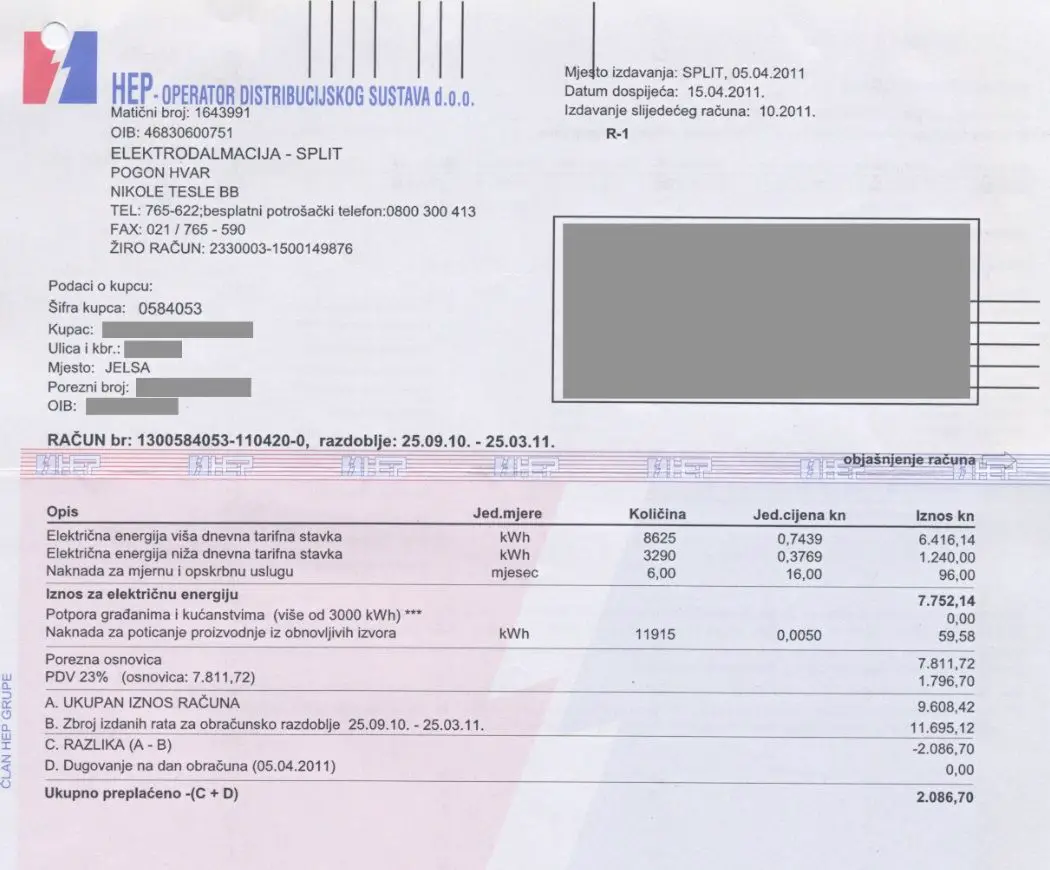
Top right: Mjesto izdavanja : place of issue
Datum dospijeća : date due
Izdavanje slijedećeg računa : date of next bill
R-1 (denotes: official bill for tax & business purposes)
On the left: Podaci o kupcu : customer details
Šifra kupca : customer number
Kupac : customer
Ulica & broj : address (street & number)
Mjesto : place (town, village)
Porezni broj : tax number (ID number / JMBG for Croatian nationals)
OIB : the identity number introduced for individuals and businesses in January 2009 – foreigners and Croatians alike need this for bill-paying and bank accounts
Račun br: Invoice number……. razdoblje: for the period…..
Objašnjenje računa: explanation of the bill (the arrow points to over the page)
Opis: account
Električna energija viša dnevna tarifna stavka: electrical energy, higher rate
Električna energija niža dnevna tarifna stavka: electrical energy, lower rate
Naknada za mjernu i opskrbnu uslugu: charge for meter-reading and service supply
Iznos za električnu energiju: amount charged for electrical energy
Potpora građanima i kućanstvima (više od 3000 kWh): support for individuals and households (over 3000 KW)
Naknada za poticanje proizvodnje iz obnovljivih izvora: charge for promoting renewable energy sources
Porezna osnovica: pre-tax total
PDV (VAT)
Kamata: interest
A. UKUPAN IZNOS RAČUNA : TOTAL CHARGE
B. Zbroj izdanih rata za obračunsko razdoblje: amount paid in instalments for the account period….
C. DIFFERENCE (A-B)
D. Dugovanje na dan obračuna: Amount due on the billing date
Ukupno za platiti: total to be paid (C + D) If you have overpaid through your instalments, this line reads: Ukupno preplaćeno – total paid in advance, then -(C + D).
On the reverse side of the bill is a breakdown of your usage, the instalments paid, and the way the electricity supplier makes the charge for the electricity you have used. Below those three sections is a final paragraph stating what your next monthly instalments have been calculated as.
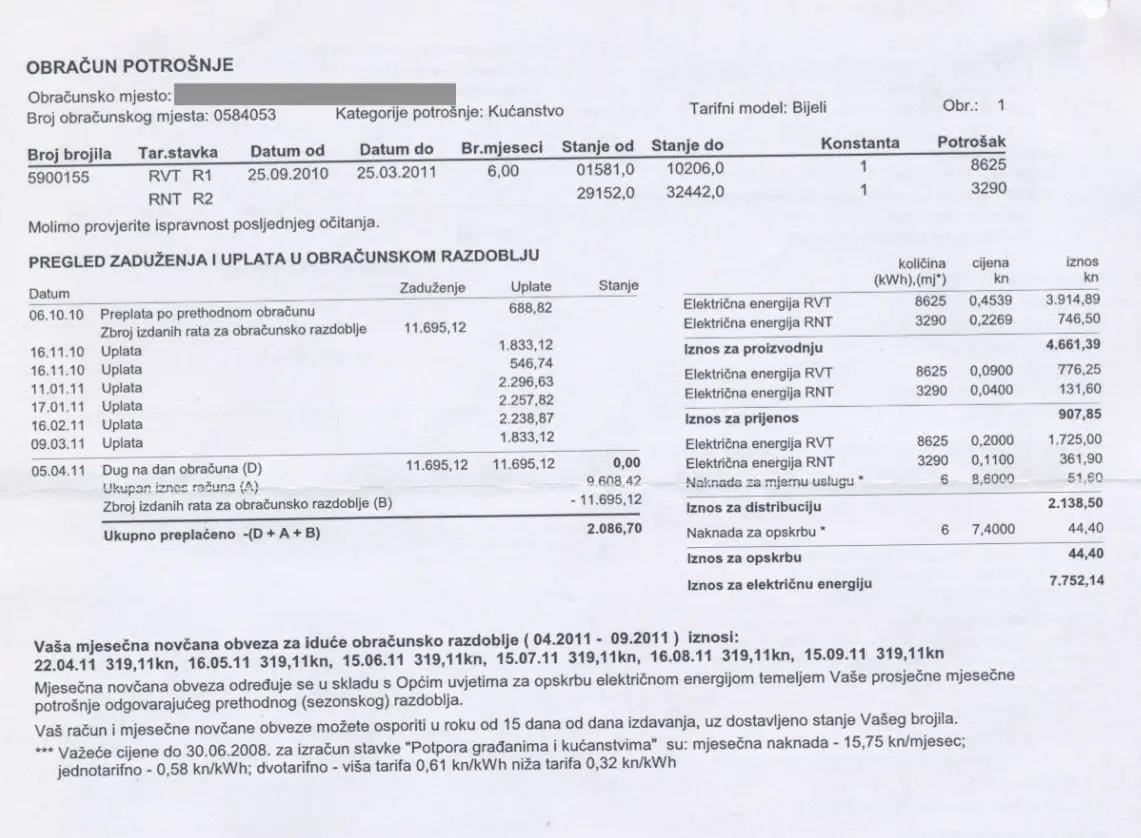
You can appeal against your bill within 15 days of receiving it, in writing, and should enclose a reading from your meter. Your meter number, which you should always quote when dealing with the electricity board, is given on page two of the bill, under “broj brojila”.
Written by @Vivian Grisogono
Updated October 2013

